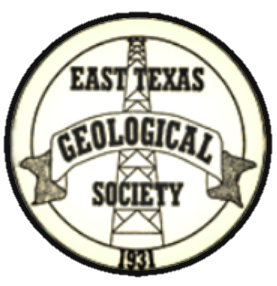NOVEMBER 2015 LUNCHEON MEETING
Dr. Stephen Cossey
presents
"Compelling Evidence from Eastern Mexico for a Late Paleocene/Early Eocene
Isolation, Drawdown, and Refill of the Gulf of Mexico"
11:30 AM Wednesday, November 18, 2015
at the Cascades
4511 Briarwood Road
Tyler, TX 75709
BIOGRAPHY
Dr. Stephen Cossey received a BSc in Geology from the University of Wales in 1974, and an MSc and PhD in Geology from the University of South Carolina in 1978. He worked for Conoco Uranium exploration and International Exploration from 1978 to 1983 in Ponca City, OK and Sohio/BP from 1983 to 1986 in Dallas, working oil & gas exploration in frontier areas of the USA. He was then transferred to Houston with Sohio in 1986 and joined the BP Exploration via the merger in 1987. From 1990-1992, he spent 2 years based at BP Research in Sunbury, UK and helped to start BP’s deepwater research program. The remainder of the time at BP was spent working exploration in the onshore USA and Gulf of Mexico. In 1995 he left BP and started a consulting company, Cossey & Associates Inc. based in Houston, Texas, specializing in the exploration and exploitation of deepwater clastic sediments. In the last 20 years he has developed deepwater field, reservoir and outcrop databases, field courses and training courses for the oil & gas industry, has consulted for over 150 companies actively exploring in deepwater reservoirs of the world. Cossey and Associates Inc. is currently based in Durango, Colorado.
ABSTRACT
"Compelling Evidence from Eastern Mexico for a Late Paleocene/Early Eocene
Isolation, Drawdown, and Refill of the Gulf of Mexico"
by
Stephen P. J. Cossey, Cossey and Associates Inc., Durango, CO, U.S.A.
Don Van Nieuwenhuise, University of Houston, Houston, TX, U.S.A.
Joseph Davis, Dallas, TX, U.S.A.
Joshua H. Rosenfeld, Independent Geologist, TX, U.S.A.
James Pindell, Tectonic Analysis Ltd., Duncton, West Sussex, U.K.
The outcrops of the Paleocene/Eocene Chicontepec Formation in eastern Mexico have provided a unique opportunity to study exposed time equivalent sections of the deepwater Gulf of Mexico’s Wilcox unit. A 2012 study established a stratigraphic framework in the Tampico-Misantla Basin (TMB) and identified sequence boundaries that could not be correlated globally. Fieldwork in 2008 had also established a network of paleo-canyons in the basin associated with a particular “54 Ma” sequence boundary. At that time, a Paleocene turbidite basin fed from the northwest was incised by a collection of NE-facing erosional canyons that coalesced laterally into the main SE-trending Chicontepec canyon; this canyon network was filled in the Early Eocene. Using the 2012 study chronostratigraphic scheme, recent micropaleontological studies were performed on a unique outcrop containing a preserved oil seep (bitumen bed) within one of these paleo-canyons. The results suggest that the basin’s water level fell rapidly by at least 200 m, starting after 55.8 Ma and leading to subaerial exposure of the upper bathyal beds for an estimated 850,000 years prior to canyon refill. Evidence of rooting (limonite tubes) occurs in the bathyal turbidites below the bitumen bed. At this time, the paleo-canyons in the TMB were eroded by fluvial systems feeding directly into the central Gulf basin, probably a hypersaline land-locked sea. The interpreted large and rapid fall and rise of water level at 55.8 – 54.95 Ma supports the “Gulf of Mexico drawdown hypothesis”, i.e., that the GOM may have been isolated from the world’s oceans due to the closure of the Florida Straits as the Cuban arc collided with the Bahamas. The timing of the interpreted drawdown coincides with the Paleocene-Eocene Thermal Maximum (PETM), hinting that the PETM may have been caused or assisted by the release of methane from hydrates in the Gulf margins.
